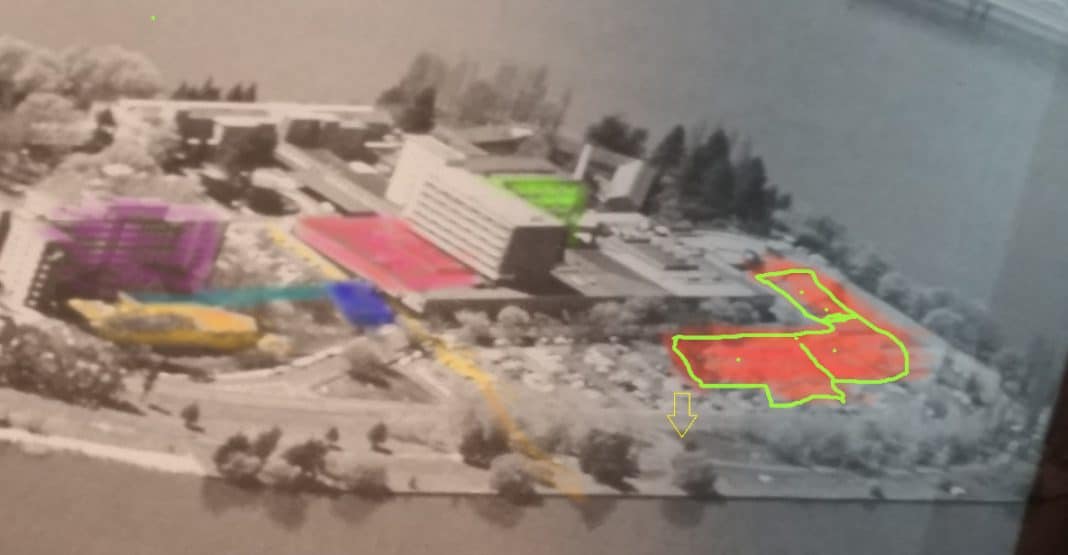Acton Peninsula has been chosen as the site for the National Memorial for Victims and Survivors of Institutional Child Sexual Abuse, but some victims’ relatives are unhappy with the location.
The Federal Government committed funding for the Memorial in 2020, and in February, the National Capital Authority announced that construction would begin on the Memorial on the southwest of Acton Peninsula, adjacent to Lake Burley Griffin.
“Ms Smith” (not her real name), the mother of a victim, believes the site chosen is inappropriate: in her opinion, it is remote, unsafe, and hidden away, and women have been raped there.
“We were very disappointed to find where they put it,” she said. “This proposed memorial is to be located out of sight and away from other national memorials.”
She wants the Memorial relocated to the Parliamentary Triangle, where, she said, it would be safer to visit and more visible.
The Federal Government’s Stakeholder Consultation Report (April 2021) had recommended that the memorial site be in “an open and public space”, “quiet and peaceful”, “close to other major landmarks / institutions”, and near “natural / landscape elements”.
Ms Smith claims the Acton Peninsula site is the location of old timber and fibro buildings at the former Canberra Hospital, which she saw demolished in 1973 before any asbestos notifications. She said the demolition materials from the buildings were left on the chosen site before removal, and doubts the site was ever remediated. The memorial design includes a garden of wildflowers, but Ms Smith believes the site may still contain asbestos, and so be dangerous for visitors, particularly children.
The buildings, Ms Smith said, were used as geriatric and rehabilitation wards, and many Canberrans died there. The site is also built over the former hospital morgue, she said, and below the hospital emergency department, where child victims of sexual abuse were examined. Nurses and ANU students were raped at the site, she said, and at least one person committed suicide there.
Now, she says, the site is the service road to the back of the National Museum, used by garbage trucks and food vans delivering to the café.
The NCA told CW the location did not house any known building structures of the former Royal Canberra Hospital. Similarly, the NCA earlier advised Ms Smith: “The location of the Memorial is not on land where the main hospital buildings were previously, and the proximity to the remaining buildings was not an issue of concern to the Advisory Group.”
Moreover, Ms Smith said, the site chosen for the Memorial is close to a proposed Police Museum; she considers this inappropriate, alleging that some victims of abuse had “fractious relationships” with police.
“What an oversight to co-locate it so close,” Ms Smith said. “There is no excuse for those who have taken part in the planning of the Memorial and the Police Museum to be so negligent. They just don’t understand or don’t care about the victims and their families.”
Ms Smith claimed no ACT victim representatives were involved in picking the site; the NCA, she alleged, handpicked the site without properly consulting victims or their families, especially Canberrans who use the lake or the surrounding areas regularly.
“This is troubling, given the high number of victims in the ACT,” Ms Smith said.
The Royal Commission into Institutional Responses to Child Sexual Abuse recommended: “A national memorial should be commissioned by the Australian Government for victims and survivors of child sexual abuse in institutional contexts. Victims and survivors should be consulted on the memorial design and it should be located in Canberra.”
That, Ms Smith claims, the NCA failed to do.
The NCA states that a specialist Advisory Group – comprising victims of institutional child sexual abuse and other experts – provided oversight and guidance on the Memorial’s establishment. A spokesperson said a range of potential sites in Canberra were identified and considered for the Memorial. Sites within the Parliamentary Triangle were not preferred by the Advisory Group, a spokesperson said; the Acton Peninsula site was unanimously selected.
Ms Smith, however, disagrees. “The people who made the decision on behalf of the thousands of victims weren’t necessarily the people who knew anything about where it was going and whether it was suitable,” she said.
For instance, Ms Smith alleges, one person on the Advisory Group who visited Canberra in December to choose the final memorial design was a victim of institutional child abuse from Melbourne who had no idea where they were when they inspected the memorial site, already chosen, or that it was part of the former hospital that imploded in 1997.
Moreover, Ms Smith said, that person claimed pressure was put on her to decide the final memorial design.
“They told her that if she didn’t hurry up and make up her mind, she would miss her plane to Melbourne,” Ms Smith said. “She wanted to catch her flight home for Christmas.”
Ms Smith said victims expected the Memorial to be put in the Parliamentary Triangle.
“The idea is that victims can go to it feeling safe, look over at Parliament House, and say they got an apology from parliament. The apology means nothing if it’s hidden shoved across on the side of the lake there.”
If you or someone you know is impacted by sexual assault, domestic or family violence, you can call or visit the website of:
- 1800RESPECT: 1800 737 732
- Canberra Rape Crisis Centre: 02 6247 2525
- Domestic Violence Crisis Service ACT: 02 6280 0900
- Lifeline: 13 11 14
- In an emergency, call 000
Canberra Daily would love to hear from you about a story idea in the Canberra and surrounding region. Click here to submit a news tip.



